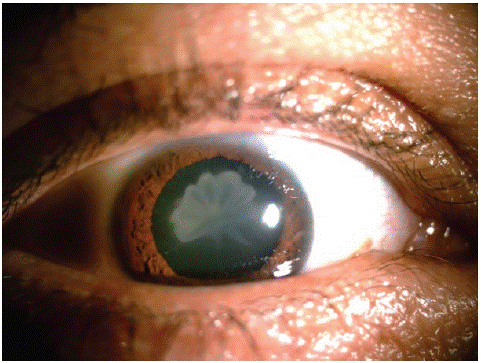Clinical Image
A 39-years-old man was referred to the ophthalmology department because of a progressive unilateral decrease of visual acuity over the previous 9 months. The patient reported having blunt ocular trauma from a fist punch one year earlier. On examination, he was noted to have a stellate-shaped axial opacification of the right lens. Traumatic cataracts are caused by blunt or penetrating ocular trauma. The proposed mechanism for indirect injury is shock waves progressing through the eye along the line of concussion. Opacification of the lens may occur in the cortex or capsule and can result in the formation of a stellate-shaped or rosette-shaped cataract. If such injuries disrupt the visual axis, cataract surgery may be required. This patient regained full visual acuity after successful phacoemulsification and intraocular-lens implantation.

